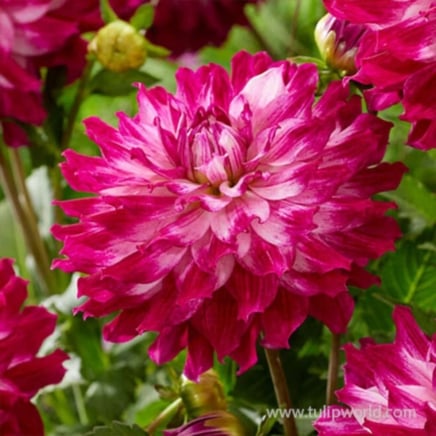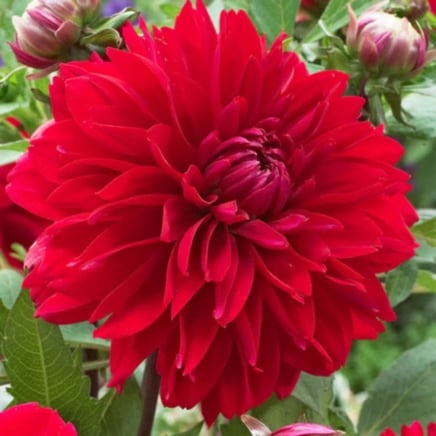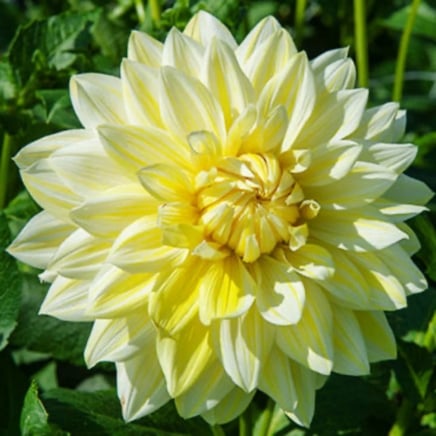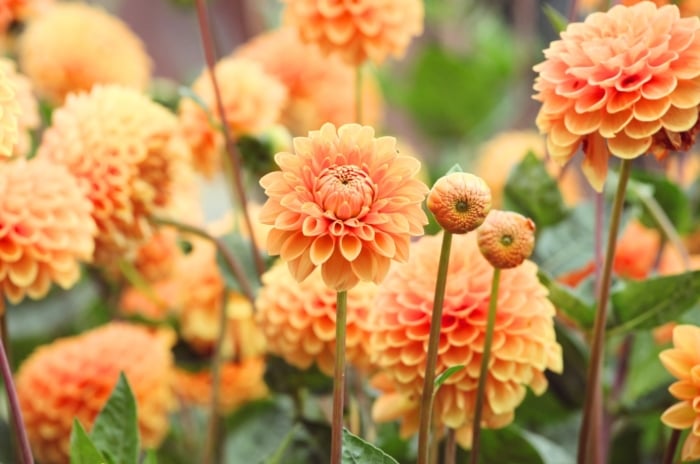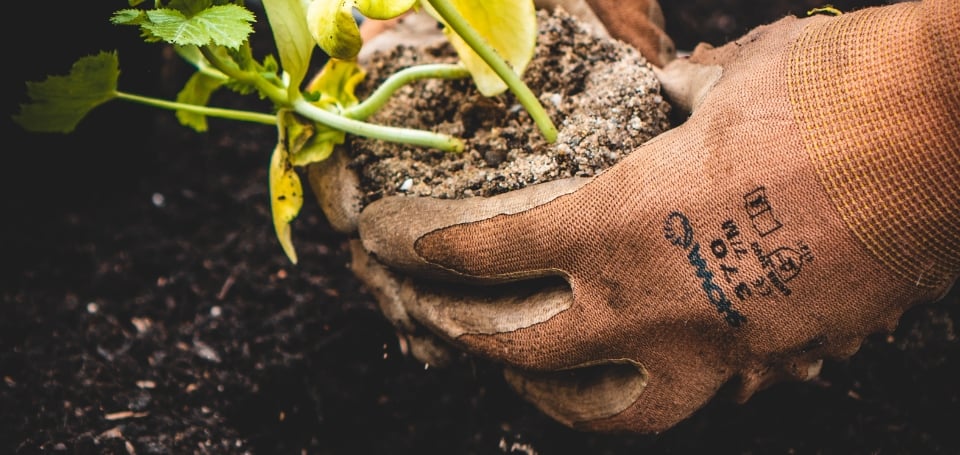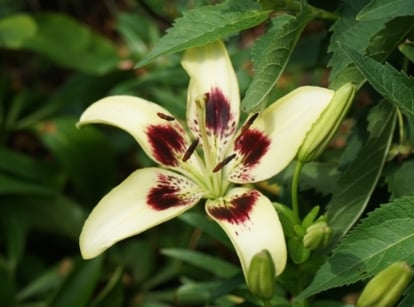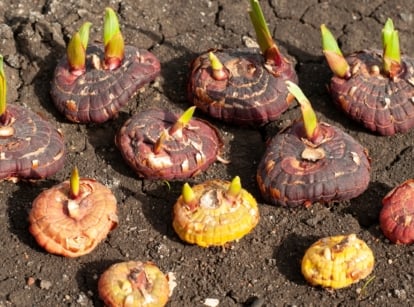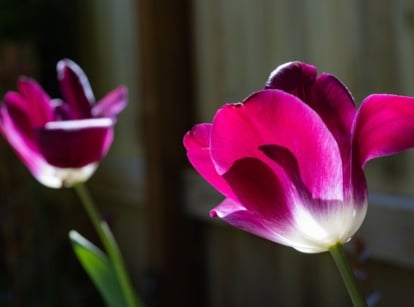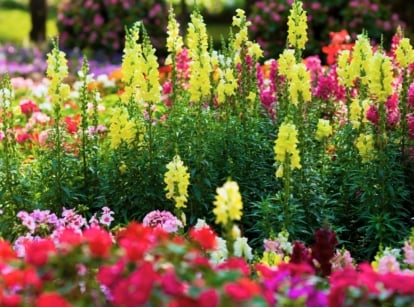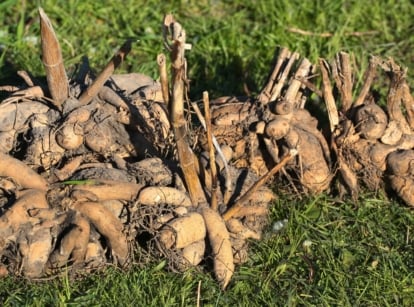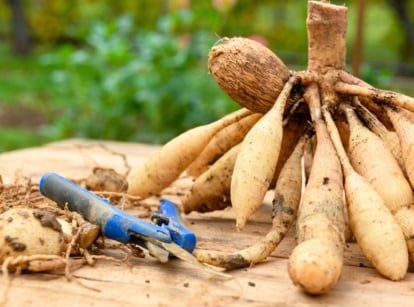Should You Pre-Sprout Dahlia Bulbs?
For many gardeners, it’s time to bring prized dahlia bulbs out of winter storage to plant once the risk of frost has passed. To ready the tubers for early growth and flowering, you can pre-sprout them. Gardening expert Katherine Rowe explores how to pre-sprout dahlias for earlier blooms this summer.

Contents
With spring’s warming temperatures comes dahlia planting time, and for many of us, that’s April and May. While waiting for warm weather (dahlias love warmth), we can pre-sprout the bulbs for earlier blooming.
Pre-sprouting exposes them to slightly warmer temperatures and light to awaken the dahlias before in-ground planting. This exposure signals that conditions are right for growing and readies them for faster flowering after transplanting.
Dahlia Overview

Dahlias, with their perfect petals, remarkable symmetry, and outstanding floral forms, start as knubby bulbs (reelly, tubers). They sprout roots and shoots from “eyes” on their fleshy, starchy root structures. These modified roots enter winter dormancy as temperatures drop and quickly reemerge in spring’s warming conditions. Many gardeners store dahlia tubers in the winter to protect them from cold damage.
Dahlias perennialize in zones 7-10 and overwinter in the ground. They don’t withstand frigid winters, and even in zone 7, you may opt to lift them to guard against winter conditions. These flowers are heat-loving but with a limit; they don’t flourish in the long, hot summers of the lower South, preferring milder seasons. Where not hardy, dahlias perform well as annuals, growing quickly in a single season.
Cool nighttime temperatures and warm days are best for dahlias to grow and flower. On average, 55-60°F (13-16°C) nighttime temperatures and 70-80°F (21-27°C) daytime are ideal.
Dahlias flower about 100 days after planting. For cold climates with short growing seasons, pre-sprouting or starting dahlias indoors in pots gives them a headstart toward growing and flowering.
When To Plant Outside

Dahlias rely on spring’s warmth to sprout. The tubers and seedlings are frost-sensitive and susceptible to damage from cold snaps. Transplant them a few weeks after the final frost when soil temperatures are consistently above 60°F (16°C).
For most climates, planting in April to May is prime and yields mid-to-late summer blooms. Warm zones can plant earlier and, with an extended growing season, as late as June to enjoy fall flowers. In zones lower than zone 7, pre-sprouted tubers or those started indoors in containers allow plenty of time for blooming once outside.
Waking Up Tubers

With a lengthy maturation between planting and blooming, we want to ensure plenty of time to enjoy their blooms. In cool climates, starting them early helps us relish the blooms before lifting them for winter. Waking up stored tubers gives the advantage of early development.
The bulbous roots benefit from a greenhouse start in spring, usually in April, but a warm indoor space works just as well. If you’ve got the space, pre-sprouting is an easy way to prep dahlias for planting. Starting them indoors in pots works well, too. When you uncover them from storage, you may see early shoots already developing.
Pre-Sprouting

If you pre-sprout your dahlias, you may see flowers four to six weeks earlier compared to direct planting after the final frost. Pre-sprouting breaks dormancy and promotes swelling of the bud eyes for rooting and shooting. It encourages earlier growth and also shows which dormant tubers are viable for the coming season.
To pre-sprout dahlias:
- Uncover stored tubers and divide any offsets with an eye (cutting them from the main tuber)
- Fill a tray with potting soil
- Lay the tubers on the surface of the soil
- Keep the growth points exposed while covering the body of the tuber lightly with soil
- Place them in a bright spot at 55°F (13°C) or warmer
- Water lightly to prevent drying out, but do so sparingly to avoid soggy media
The eyes will begin to swell with exposure to warmth, light, and moisture, signaling that conditions are right for growth. In a few weeks, you’ll likely see sprouts. Time this to correspond with transplanting about two weeks after frost.
Starting Tubers in Pots

Starting tubers indoors in pots lets us mature them for six to eight weeks before transplanting them outside. In cold climates (zones 6 and lower), start potting in mid-to-late April. March and early April work well for warmer zones.
Use gallon-sized containers with drainage holes, filling them about halfway. Situate the tubers with the eye facing upward, and cover them with several inches of soil. Wait one or two days to water them lightly and water sparingly as roots and shoots develop before moving them outside.
Place the containers in a sunny spot with cool temperatures (around 55°F or 13°C). After transplanting in optimal temperatures, expect to see the cheery blooms begin in July and last until frost.
Hardening Off

If you pre-sprout your dahlias indoors in containers, prepare them further by exposing them to sunlight and daytime temperatures before planting. Move pots outside to a sunny spot during the day and bring them back inside for chilly nights.
Exposure to warmth and light is another means of pre-sprouting or encouraging the bud eyes to swell. Roots and shoots will begin to develop and will be quick to take off after in-ground planting. Exposing them to garden situations gradually acclimates the new growth to external conditions.
Frost Protection

Even after waiting until the forecasted final frost passes and temperatures rise above 55-60°F (13-16°C), there’s no guarantee against a late spring snapback frost. In the case of prolonged chilly temperatures or freezing conditions, temporary insulation protects newly planted dahlias from cold damage.
For short-term low temperatures, mound the crown with mulch until the cool spell ends. Pull back the temporary layer when temperatures warm so the sun can reach the developing shoots and warm the soil around the tubers.
If frost is in the forecast, use frost cloth or another protective fabric to cover the seedlings. Cloth protection also works in situations where pre-sprouting trays or pots are subject to temperature drops (like in a cold frame or unheated greenhouse).
Homemade cloches work well for covering individual plants. Use a milk jug or plastic bottle with the bottom removed, slipping it over the tender crowns until conditions warm.
Digging and Storing

At the end of a beautiful season, it’s time to decide whether you’ll leave the tubers in the ground or dig them for winter storage. Even in warm zones where they overwinter outside, some gardeners choose to bring them inside rather than risk a cold winter.
Dig up the tubers and store them together in a cool space for the next growing season. It’s best to wait until the first few hard frosts in fall to dig dahlia tubers. Stems and leaves blacken and die back, and tubers harden off. Frost exposure prevents storing green tubers, which shrivel quickly in winter storage.
When digging tubers, take care not to damage the long roots or the tuber itself (they break easily at the eye during lifting). Leave a few inches of the stalk intact. Brush off the soil, rinse the tuber, and trim back roots. Allow it to dry overnight in a cool, dark place (40-50°F or 4-10°C) before storing.
Boxes, crates, or paper bags work well as storage vessels. Place the tubers in damp sand, vermiculite, newspaper, or wood shavings, keeping the medium moist but not wet. Check them periodically to make sure the bulbs don’t dry out beyond their initial storage condition. This ensures that you can pull healthy dahlias out of storage and pre-sprout them again next spring!

